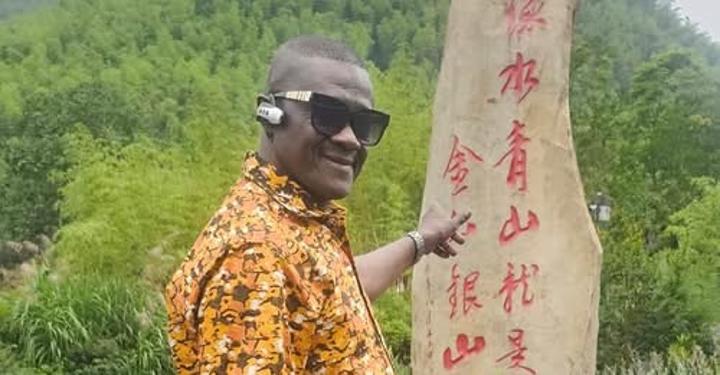Africa-Press – Gambia. One of the most powerful concepts I encountered during my visit to China was that of “Common Prosperity”—an idea that has evolved from a domestic development strategy into a global aspiration. Originally aimed at narrowing the gap between China’s urban and rural populations, the concept now drives the international scope of the Belt and Road Initiative (BRI).
China’s belief in common prosperity is not simply an economic policy—it is a national ethos rooted in its cultural tradition and political will. It emphasizes that development must benefit all, not just the elite. In China, this ideal is reflected in how infrastructure, education, healthcare, and jobs are distributed across regions. And now, through the Belt and Road Initiative, that same spirit of shared growth is being extended to the world—including Africa.
The Belt and Road Initiative is China’s global development strategy to enhance trade and cooperation by investing in infrastructure and people-to-people exchanges across Asia, Africa, Europe, and beyond. It is a vision of a “global community of shared future”, where no country is left behind.
The BRI is built on four key pillars:
From roads to ports, railways to energy grids, BRI investments reduce bottlenecks, enhance connectivity, and boost productivity. In participating countries, this has spurred trade, job creation, and industrial development—especially in regions that were previously neglected.
Unlike exploitative models of development, the BRI insists on mutual consultation, joint contribution, and shared rewards. Every nation, regardless of size or wealth, is treated as a respected partner.
The BRI focuses on uplifting less developed areas and populations. It aligns with the Sustainable Development Goals by addressing poverty, inequality, and lack of opportunity, especially in rural communities.
China’s approach is guided by a belief that the world belongs to all of us. Its foreign policy rejects zero-sum geopolitics and embraces collective responsibility to protect the environment, foster peace, and ensure dignity for all.
The Gambia has much to gain from embracing the Belt and Road Initiative—not as a passive recipient of aid, but as an active partner in shared development. Our nation stands to benefit from:
Roads, bridges, and ports that link farmers and businesses to markets
Energy infrastructure that powers schools, hospitals, industries and homes
Education exchanges and vocational training that upskill our youth
Healthcare collaborations to strengthen service delivery and resilience
But to unlock these benefits, we must design our policies around inclusive growth. We must ensure that infrastructure projects go hand in hand with human development and community empowerment.
For Africa as a continent, the BRI represents a chance to reshape our development narrative—from dependency to partnership, from stagnation to transformation. African countries can leverage the BRI to:
Close the continent’s $130–170 billion annual infrastructure gap
Build transcontinental railways and digital corridors
Accelerate the African Continental Free Trade Area (AfCFTA)
Promote pan-African cooperation and technological transfer
Let us be clear: China is not offering charity; it is offering partnership. The BRI is not about domination, but co-creation of value. What is required from African leaders is political will, visionary planning, and commitment to good governance.
In embracing the BRI, The Gambia and Africa must also embrace the deeper idea of Common Prosperity. It is not enough to grow GDP; we must grow hope. Growth must be equitable, not concentrated in a few hands. Development must be human-centred.
We need to adapt China’s approach of targeting rural revitalization, promoting SMEs and entrepreneurship, expanding vocational education, and ensuring health and housing access for the vulnerable. That is what will transform lives. That is what will build a self-reliant Gambia and a strong Africa.
If China, with over 1.4 billion people and vast geographic challenges, can lift 800 million out of poverty through purposeful leadership and visionary planning, then surely The Gambia—with just 2.8 million people and relatively flat terrain—can do the same.
Let us build a national vision that reflects the values of common prosperity. Let us see the Belt and Road not as a road to China, but as a road to our own better future.
It is time to think big, plan smart, and act together.
Source: VOICE
For More News And Analysis About Gambia Follow Africa-Press






